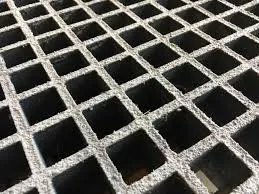
-
 Afrikaans
Afrikaans -
 Albanian
Albanian -
 Amharic
Amharic -
 Arabic
Arabic -
 Armenian
Armenian -
 Azerbaijani
Azerbaijani -
 Basque
Basque -
 Belarusian
Belarusian -
 Bengali
Bengali -
 Bosnian
Bosnian -
 Bulgarian
Bulgarian -
 Catalan
Catalan -
 Cebuano
Cebuano -
 China
China -
 China (Taiwan)
China (Taiwan) -
 Corsican
Corsican -
 Croatian
Croatian -
 Czech
Czech -
 Danish
Danish -
 Dutch
Dutch -
 English
English -
 Esperanto
Esperanto -
 Estonian
Estonian -
 Finnish
Finnish -
 French
French -
 Frisian
Frisian -
 Galician
Galician -
 Georgian
Georgian -
 German
German -
 Greek
Greek -
 Gujarati
Gujarati -
 Haitian Creole
Haitian Creole -
 hausa
hausa -
 hawaiian
hawaiian -
 Hebrew
Hebrew -
 Hindi
Hindi -
 Miao
Miao -
 Hungarian
Hungarian -
 Icelandic
Icelandic -
 igbo
igbo -
 Indonesian
Indonesian -
 irish
irish -
 Italian
Italian -
 Japanese
Japanese -
 Javanese
Javanese -
 Kannada
Kannada -
 kazakh
kazakh -
 Khmer
Khmer -
 Rwandese
Rwandese -
 Korean
Korean -
 Kurdish
Kurdish -
 Kyrgyz
Kyrgyz -
 Lao
Lao -
 Latin
Latin -
 Latvian
Latvian -
 Lithuanian
Lithuanian -
 Luxembourgish
Luxembourgish -
 Macedonian
Macedonian -
 Malgashi
Malgashi -
 Malay
Malay -
 Malayalam
Malayalam -
 Maltese
Maltese -
 Maori
Maori -
 Marathi
Marathi -
 Mongolian
Mongolian -
 Myanmar
Myanmar -
 Nepali
Nepali -
 Norwegian
Norwegian -
 Norwegian
Norwegian -
 Occitan
Occitan -
 Pashto
Pashto -
 Persian
Persian -
 Polish
Polish -
 Portuguese
Portuguese -
 Punjabi
Punjabi -
 Romanian
Romanian -
 Russian
Russian -
 Samoan
Samoan -
 Scottish Gaelic
Scottish Gaelic -
 Serbian
Serbian -
 Sesotho
Sesotho -
 Shona
Shona -
 Sindhi
Sindhi -
 Sinhala
Sinhala -
 Slovak
Slovak -
 Slovenian
Slovenian -
 Somali
Somali -
 Spanish
Spanish -
 Sundanese
Sundanese -
 Swahili
Swahili -
 Swedish
Swedish -
 Tagalog
Tagalog -
 Tajik
Tajik -
 Tamil
Tamil -
 Tatar
Tatar -
 Telugu
Telugu -
 Thai
Thai -
 Turkish
Turkish -
 Turkmen
Turkmen -
 Ukrainian
Ukrainian -
 Urdu
Urdu -
 Uighur
Uighur -
 Uzbek
Uzbek -
 Vietnamese
Vietnamese -
 Welsh
Welsh -
 Bantu
Bantu -
 Yiddish
Yiddish -
 Yoruba
Yoruba -
 Zulu
Zulu
Exploring the Benefits and Applications of FRP Walkways in Modern Infrastructure
Exploring the Wonders of FRP Walkways A Modern Solution for Safety and Durability
In today's rapidly evolving industrial landscape, the necessity for effective safety measures and durable construction materials has never been more critical. Among the innovative solutions gaining prominence is the use of Fiber Reinforced Polymer (FRP) walkways. These walkways have emerged as a preferred choice across various sectors, including manufacturing, construction, and even recreational environments. This article delves into the myriad benefits of FRP walkways, exploring their composition, advantages, and applications.
FRP is a composite material made from a polymer matrix reinforced with fibers, such as glass, carbon, or aramid. The resulting material is both lightweight and incredibly strong, making it an ideal candidate for walkways subjected to heavy foot traffic or harsh environmental conditions. Unlike traditional materials like wood or metal, FRP does not corrode or degrade over time, which prolongs its lifespan and reduces maintenance costs.
Exploring the Wonders of FRP Walkways A Modern Solution for Safety and Durability
Safety is another paramount concern when designing walkways, particularly in industrial settings. FRP walkways are inherently slip-resistant, providing a secure surface for individuals to traverse. This aspect is particularly important in areas where spills may occur or where conditions can be slippery due to moisture. Additionally, FRP can be engineered to have a textured surface, further enhancing grip and reducing the likelihood of accidents, thereby prioritizing worker safety.
frp walkway

The lightweight nature of FRP also contributes to its versatility and ease of installation. Unlike heavy metal structures, FRP components can be transported and assembled with minimal effort, significantly reducing labor costs during installation. Moreover, the ability to customize FRP walkways means they can be tailored to specific dimensions and designs, allowing for seamless integration into existing environments with minimal disruption.
Another point worth noting is the environmental impact of FRP materials. Given their longevity and resistance to degradation, FRP walkways offer a sustainable solution that minimizes the need for frequent replacements. Additionally, many FRP products are manufactured using recycled materials, aligning them with modern sustainability practices. As industries increasingly prioritize eco-friendly solutions, FRP walkways present an attractive option that meets both operational needs and environmental responsibilities.
Applications of FRP walkways extend beyond industrial settings. They are increasingly utilized in recreational areas, such as parks and nature trails, where they provide safe and durable surfaces for visitors. The aesthetic appeal of FRP can also be enhanced through various colors and finishes, enabling it to blend seamlessly into natural landscapes while allowing for functionality.
In conclusion, FRP walkways represent a significant advancement in engineering and safety design, offering a robust solution suitable for a wide range of applications. With their corrosion resistance, slip-resistant properties, lightweight nature, and sustainability, FRP walkways are not just a practical choice; they are a forward-thinking investment in safety and durability. As industries continue to evolve and prioritize worker welfare, the adoption of FRP walkways will likely increase, paving the way for safer and more efficient environments. Whether in industrial complexes or recreational spaces, the future of walkways looks bright with FRP leading the way.
Latest news
-
High-Quality Fiberglass Car Bodies Durable GRP Car & Boat Body SolutionsNewsJul.08,2025
-
High-Quality Fiberglass Dual Lamination Product Manufacturer Durable FRP & GRP Dual Lamination SolutionsNewsJul.08,2025
-
Rectangular Tank with Dimensions for GRP Calculation Custom Fiberglass GRP Rectangular TanksNewsJul.07,2025
-
High-Quality Fiberglass Weir Custom FRP Weir & Fiberglass Tanks ManufacturerNewsJul.07,2025
-
CPVC FRP Pipe A Reliable Choice for Industrial Applications High Strength & Corrosion ResistanceNewsJul.07,2025
-
Fiberglass Scrubber for Effective Cleaning and Stain Removal – Superior Performance in Various ApplicationsNewsJul.06,2025









